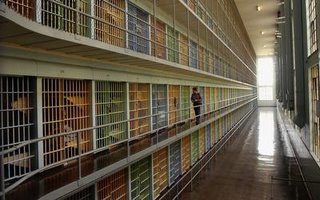 over the past few weeks, The Oregonian has been publishing some very interesting stories about prisons and sentencing in oregon. one series makes clear that “prison costs are shackling oregon” and offers compelling evidence to make the case.
over the past few weeks, The Oregonian has been publishing some very interesting stories about prisons and sentencing in oregon. one series makes clear that “prison costs are shackling oregon” and offers compelling evidence to make the case.
more recently, another article reported that “With Democrats now in charge of the Legislature, lawmakers may try to soften a 1994 get-tough-on-crime law in a way that would allow the early release of juvenile offenders charged with murder, kidnapping and other serious crimes.” while this change would not have a huge impact on costs (about 50 youths every year are sentenced under Measure 11 and given mandatory minimum sentences), it would certainly impact hope and morale amongst young offenders serving time in oregon prisons.
as journalist brad cain reports it, the proposed “second look” would give 15-, 16-, and 17-year-olds convicted of serious offenses and sentenced to mandatory minimums a chance to go before a judge after they have served half of their sentences. if the judge felt that significant progress was made while incarcerated, s/he could allow the young offenders to serve the rest of their sentences back out in the community under post-prison supervision.
this seems like a good idea to me, a bit like blended sentences used with young offenders in other states. one of the students in our inside-out class last quarter was sentenced at 16 to a minimum of 25 years. he’s eleven years into his sentence now and, if this law were in place (and retroactive), he would have the possibility of getting a second look and being rewarded for the hard work he has done and the maturity he has shown while in prison. perhaps most importantly, it could offer him the hope of building a life. in prison, a little hope can go a long way.
*the photo above is from the oregonian and was taken in the oregon state penitentiary where we held our inside-out class.






